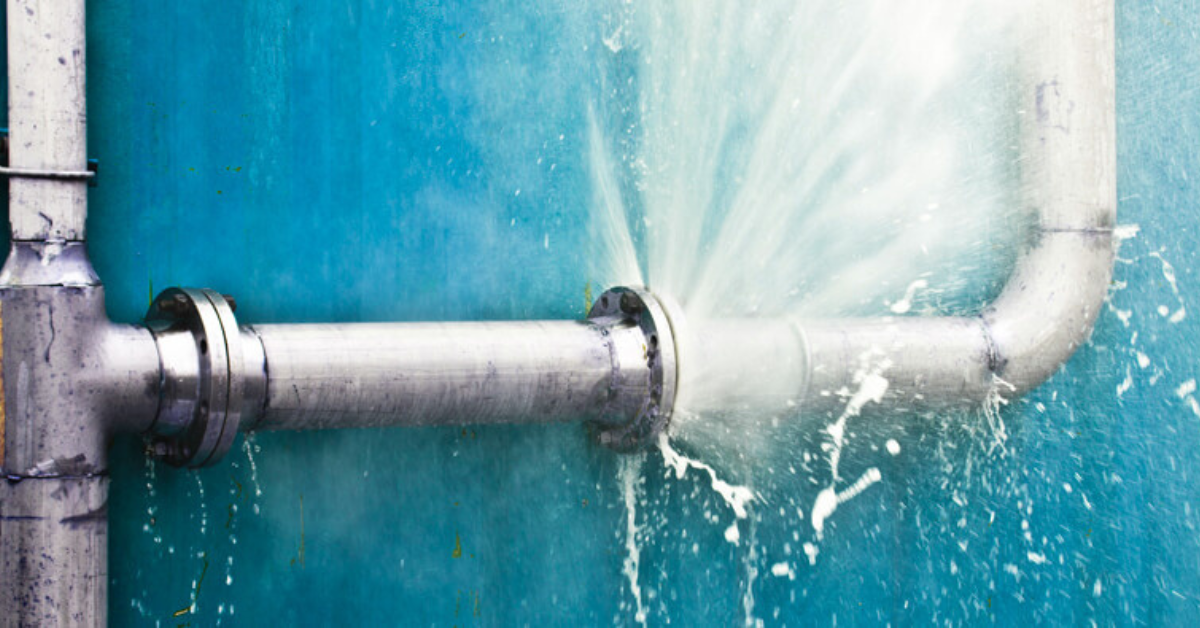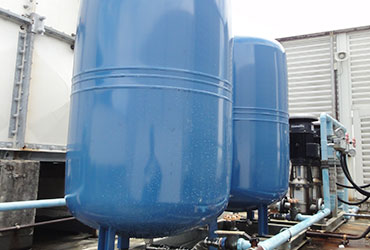An Complete Advice to Fixing Low Water Pressure in Your Home
An Complete Advice to Fixing Low Water Pressure in Your Home
Blog Article
This article on the next paragraphs pertaining to 10 Reasons for Low Water Pressure in Your House is unquestionably captivating. You should look it over.

Low tide stress in your home can be an aggravating issue, impacting whatever from showering to washing dishes. If you're experiencing weak water flow, there are a number of possible reasons and solutions to explore. In this guide, we'll talk about typical reasons for low tide pressure and functional steps to address the concern successfully.
Introduction to Low Water Stress
Low tide pressure happens when the circulation of water from your faucets, showers, and other fixtures is weaker than usual. This can make everyday tasks extra difficult and much less effective. Understanding the root causes of low water pressure is crucial to locating the right solution.
Usual Reasons For Low Tide Stress
Pipeline Obstructions
With time, pipelines can become obstructed with mineral deposits, sediment, or debris, limiting the flow of water. This is an usual problem in older homes with galvanized steel pipes.
Deterioration
Rust within pipes can lead to leaks and lowered water pressure. Rust buildup can constrict water circulation, especially in aging plumbing systems.
Faulty Pressure Regulators
Stress regulatory authorities are accountable for preserving constant water stress in your home. If they malfunction, it can cause low water stress or unequal circulation throughout the house.
Municipal Water Issues
Occasionally, the problem exists outside your home. Community water concerns, such as main line leaks or upkeep job, can momentarily decrease water pressure in your area.
Exactly How to Identify Low Tide Stress
Inspecting Taps and Fixtures
Begin by checking the water pressure at different taps and fixtures throughout your home. If the issue is separated to details areas, it may suggest local troubles.
Evaluating Pipes
Examine noticeable pipes for indications of leaks, rust, or clogs. Pay attention to any kind of uncommon noises, such as banging or rattling pipelines, which could indicate concerns within the plumbing system.
Consulting with a Plumber
If you're incapable to pinpoint the source of low water stress, take into consideration employing an expert plumber to conduct an extensive inspection. They can determine underlying problems and advise appropriate services.
Do It Yourself Solutions to Repair Low Tide Stress
Cleansing Aerators and Showerheads
Natural resources can accumulate in aerators and showerheads, reducing water flow. Eliminate and clean these parts on a regular basis to boost water stress.
Flushing Hot Water Heater
Debris accumulation in the hot water heater can limit flow and lower efficiency. Purging the storage tank regularly aids remove sediment and preserve optimal efficiency.
Inspecting Pressure Regulatory Authority
Make certain that the pressure regulatory authority is working appropriately. Readjusting or changing the regulatory authority can help restore appropriate water pressure throughout your home.
Clearing Up Clogs in Pipeline
For minor clogs, attempt utilizing a plumbing snake or chemical drain cleaner to clear obstructions in pipelines. Be cautious when using chemicals and comply with safety standards.
When to Call a Specialist Plumber
If do it yourself efforts fall short to solve the problem or if you suspect considerable plumbing troubles, it's ideal to look for assistance from a licensed plumber. They have the expertise and devices to resolve intricate problems securely and properly.
Safety Nets to Keep Water Pressure
Regular Upkeep
Schedule regular upkeep for your plumbing system to avoid problems such as corrosion, leaks, and obstructions. Dealing with small troubles early can help avoid more significant fixings later on.
Installing a Pressure Booster
Take into consideration mounting a stress booster pump to enhance water pressure in areas with continually low circulation. This can be particularly useful for multi-story homes or buildings with high-demand fixtures.
Monitoring Water Use
Bear in mind water use routines and stay clear of overtaxing the plumbing system. Basic adjustments, such as staggering showers and laundry lots, can aid keep sufficient water pressure.
Conclusion
Managing low tide stress can be aggravating, but determining the underlying causes and carrying out proper services can recover ideal flow throughout your home. Whether it's cleansing aerators, checking pipelines, or seeking advice from a plumber, taking proactive actions can ensure a steady supply of water for your everyday requirements.
FOUR WAYS TO FIX LOW WATER PRESSURE NOW
Turning on a shower or faucet only to find the water comes out in a sad, slow drizzle is never a good feeling. How exactly are you supposed to wash a pan or take a quick shower when it takes 10 minutes just to rinse off a little soap? The good news is that when your water pressure is bad, there's always a cause: typically one that can be easily fixed. Here are some of the most common causes of low pressure and what you can do to fix the issue:
DEBRIS AND MINERAL DEPOSIT BUILDUPS
If you notice low water pressure from just one or two of the fixtures in your house, the problem likely has to do with debris buildup. Water is full of minerals and other debris, all of which can accumulate in your pipes and on your fixtures. This can cause a blockage that affects how much water flows through. To fix this, try filling a small plastic bag with white vinegar, and use a rubber band to hang it around your showerhead or faucet. Let the head of the fixture soak for a few hours, and the vinegar should loosen the deposits.
WATER LEAKS
Leaks are another common cause of low water pressure. If water is flowing out of your plumbing through a hole or crack before it can reach your fixture, the pressure coming out of the faucet or showerhead will be lower. A plumbing professional is your best bet for finding and repairing a leak in your water supply pipes.
Leaks are another common cause of low water pressure. If water is flowing out of your plumbing through a hole or crack before it can reach your fixture, the pressure coming out of the faucet or showerhead will be lower. A plumbing professional is your best bet for finding and repairing a leak in your water supply pipes.
FOUR WAYS TO FIX LOW WATER PRESSURE NOW
Turning on a shower or faucet only to find the water comes out in a sad, slow drizzle is never a good feeling. How exactly are you supposed to wash a pan or take a quick shower when it takes 10 minutes just to rinse off a little soap? The good news is that when your water pressure is bad, there's always a cause: typically one that can be easily fixed. Here are some of the most common causes of low pressure and what you can do to fix the issue:
DEBRIS AND MINERAL DEPOSIT BUILDUPS
If you notice low water pressure from just one or two of the fixtures in your house, the problem likely has to do with debris buildup. Water is full of minerals and other debris, all of which can accumulate in your pipes and on your fixtures. This can cause a blockage that affects how much water flows through. To fix this, try filling a small plastic bag with white vinegar, and use a rubber band to hang it around your showerhead or faucet. Let the head of the fixture soak for a few hours, and the vinegar should loosen the deposits.
WATER LEAKS
Leaks are another common cause of low water pressure. If water is flowing out of your plumbing through a hole or crack before it can reach your fixture, the pressure coming out of the faucet or showerhead will be lower. A plumbing professional is your best bet for finding and repairing a leak in your water supply pipes.
Leaks are another common cause of low water pressure. If water is flowing out of your plumbing through a hole or crack before it can reach your fixture, the pressure coming out of the faucet or showerhead will be lower. A plumbing professional is your best bet for finding and repairing a leak in your water supply pipes.
A VALVE ISSUE
If you have low water pressure throughout your home, check your main shut-off valve to make sure it's completely open. You may also want to see if there's a pressure-reducing valve installed. If there is, have a plumber help you adjust the settings to get the pressure you're looking for.
OTHERS USING WATER
Believe it or not, your low water pressure could be caused by your neighbors. If you notice low pressure at certain times of day, it may be because you and the people living next to you have similar schedules - when everyone is showering at the same time, the pressure will be lower in every home. Low pressure throughout the neighborhood may also be caused by an issue with your municipal water supply. If that's the case, call the supplier to see if they're working on the issue.
https://www.rotorooter.com/blog/water-leaking/low-water-pressure-fixes/

Do you enjoy reading up on 9 Reasons for Low Water Pressure in Your House? Try to leave a comment below. We'd be delighted to know your thoughts about this blog post. In hopes that you come back again in the near future. Sharing is nice. Helping others is fun. Thank you for taking the time to read it.
Need Help? Hire Us Now! Report this page